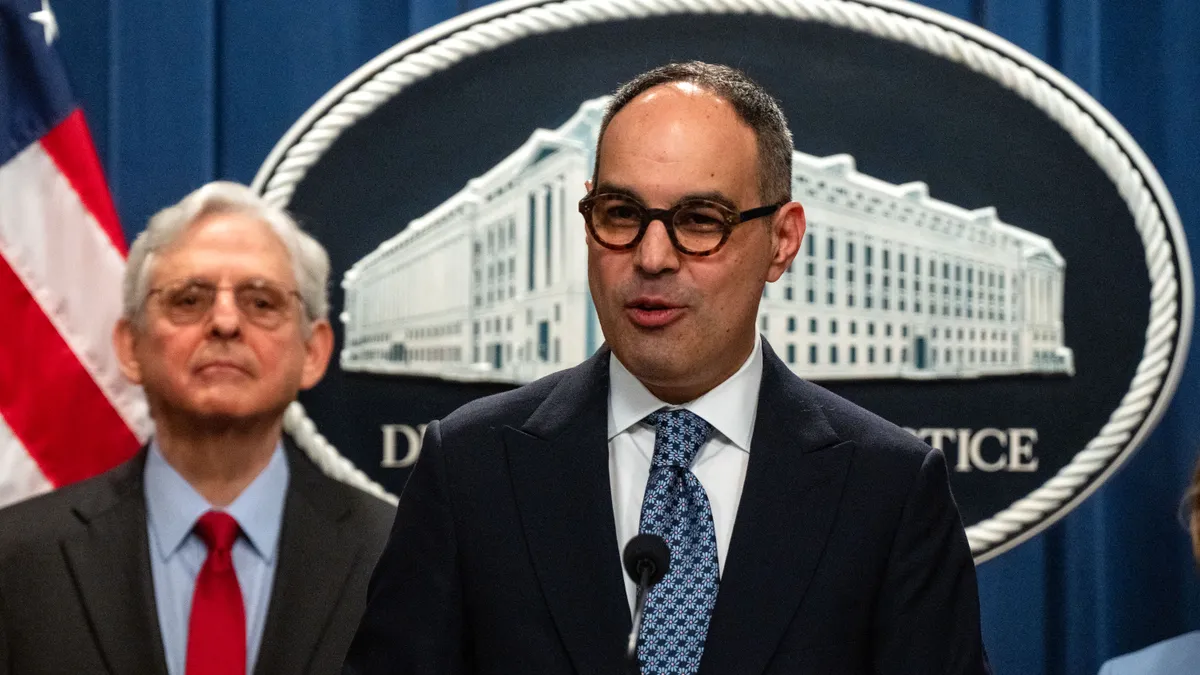Dive Brief:
- Nearly 70.3 billion real-time payments transactions were processed globally in 2020, a surge of 41% compared in 2019 due to the pandemic, according to a recent report by ACI Worldwide. Mobile wallet adoption also rose as consumers pivoted to contactless payment channels to avoid contracting the virus.
- The report projects a compound annual growth rate (CAGR) for real-time payments of 23.6% from 2020 to 2025, across 48 surveyed markets.
- “The pandemic has cast the spotlight on the importance of digital payments and robust payment infrastructures, condensing a decade of anticipated innovation into one year and creating human behavioral changes that will not reverse as we emerge from the crisis,” Jeremy Wilmot, chief product officer at ACI Worldwide, said in the press release.
Dive Insight:
Spurred by a year of unprecedented disruption, 2020 real-time payments grew in both volume and value. The COVID-19 pandemic dramatically accelerated pre-existing but slow-moving trends away from cash and checks and towards greater reliance on digital payments in general, and real-time payments in particular.
The total number of real-time transactions in 2020 was 70.3 billion, up by 41% from 50 billion in 2019. The share of real-time payments across all electronic transactions was 9.8% in 2020 compared to 7.6% in 2019 and is expected to reach 17.4% by 2025.
“Countries with a robust digital payments infrastructure already in place have coped better than those without when it comes to containing the economic impact of the pandemic,” Wilmot said. “Real-time payments have enabled governments, working jointly with financial institutions, to accelerate much-needed disbursements and economic stimulus payments to their citizens.”
Real-time payments are relatively new to the U.S. A highly diverse financial system with firmly established habits was pushed to adapt to a real-time payment infrastructure as the pandemic hit.
“Influenced by the COVID-19 pandemic, the real-time payments share of all transactions doubled in 2020 [in the US],” the report stated. “The forecast for the five-year 2020-25 timeframe is for a CAGR of 43.4%, or 6.2 [billion] additional transactions.”
Payment platforms like the Federal Reserve Bank’s FedNow program are also underway to connect all financial institutions to process transactions instantaneously.
“The rapid expenditure of COVID emergency relief payments highlighted the critical importance of having a resilient instant payments infrastructure with nationwide reach, especially for households and small businesses with cash flow constraints,” Federal Reserve Governor Lael Brainard said last August.
A real-time payment infrastructure exists in the U.S., but isn't widely used due to the privatization of payment channels. Zelle is one consumer real-time electronic payment method, but it isn't used by all financial institutions across the country.
There is one private RTP platform owned by big banks like Wells Fargo, Citibank and Bank of America, but some banks don’t like the idea of working through a clearinghouse operated by rivals. Smaller banks, in particular, aren't necessarily interested in joining a network that's owned by their big bank competitors.
“They've been essentially paying money to their competitors for this particular solution, which doesn't sit very well with them,” Sarah Grotta, director of the debit and alternative products advisory service at Mercator Advisory Group, said. “So the Fed needed to step in and be an alternative solution to help to reach all accounts at all financial institutions.”
Nearly 200 financial institutions like Visa, Mastercard, and Temenos are working with the Federal Reserve to create FedNow, which is slated to launch in 2023.
In 2020, only 0.6% of all processed transactions were real-time in the U.S. and are expected to reach 3% by 2025, according to the report. Nearly 1.2 billion transactions were processed in real-time in the U.S. in 2020.
Countries with the most real-time payment transactions last year were India (25.5 billion), China (15.7 billion), South Korea (6 billion), Thailand (5.2 billion), and the U.K. (2.8 billion). Real-time transactions are higher in Asian countries as P2P payment channels are widely accepted and gained traction during the pandemic, the report stated.
Global mobile payments rose to a historic high of 46% in 2020, up from 40.6% in 2019 and 18.9% in 2018. Total mobile wallet transactions amounted to 102.7 billion in 2020 and are expected to reach 2.5 trillion by 2025.











